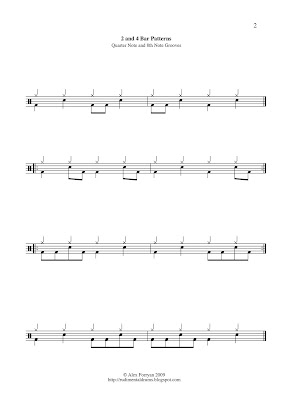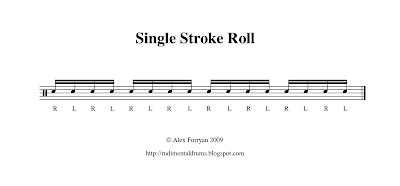Some classes were doing ALL of the 8th Note and Quarter Note grooves, working between the 8th Note and Quarter Note versions of the same grooves, paying attention to where the bass drum beats fall once the 'ands' have been removed in the Quarter Note version.
Below are a few exercises to work through in your own time. I've written then over 2 and 4 bar sections to get you used to reading multiple bars.
Other classes were introduced to my technique of using the 'up' part of your hi hat stroke to identify where the 16th notes fall in between the 8th notes on the hi hat. This then lead into playing the same patterns but in a more relaxed, laid-back 'swing' style. Below is an exercise demonstrating what we worked on and how the same groove can be written and played three separate ways.
Tuesday and Wednesday Classes
Monday and Thursday Classes
















